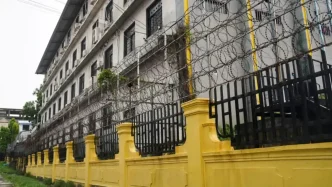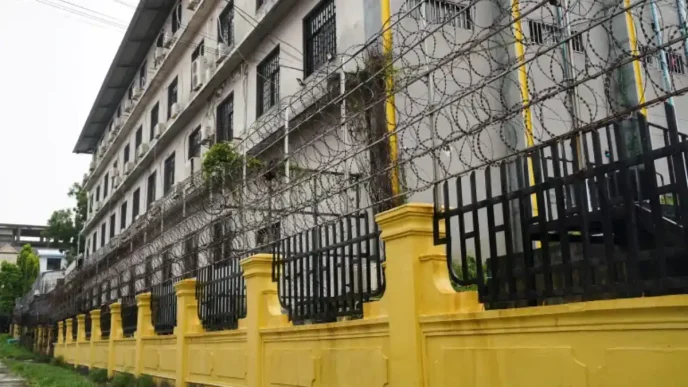Manila, 12 February 2025 – The race for the 2025 Philippine national elections has officially begun, with a 90-day campaign period for 66 senatorial and 156 party-list candidates starting on 11 February. As candidates fan out across the archipelago to win over voters, the Commission on Elections (Comelec) has vowed to enforce stringent regulations on campaign activities, propaganda, and spending, aiming to ensure a fair and orderly electoral process ahead of the 12 May polling day.
The campaign launch has already seen high-profile figures and political alliances hitting the ground running. Former senators Kiko Pangilinan and Bam Aquino, seeking a political comeback, began their “people’s campaign” with a Mass at the University of the Philippines in Diliman, before heading to a rally in Dasmariñas City, Cavite. Meanwhile, President Ferdinand Marcos Jr.’s coalition, “Alyansa Para sa Bagong Pilipinas,” staged a proclamation rally in Laoag City, Ilocos Norte, while the PDP-Laban party is set to kick off its campaign on 13 February in San Juan City. The progressive Koalisyong Makabayan, including Representatives Arlene Brosas and France Castro, started with a symbolic event at Kartilya ng Katipunan in Manila, embarking on a grassroots initiative dubbed “Tao Po. Taumbayan Po” to engage directly with communities.
Strict Campaign Rules and Environmental Focus
At the heart of Comelec’s oversight is Resolution No. 11086, issued in December 2024, which outlines detailed guidelines for campaign conduct. Candidates and parties were given a 72-hour window before the campaign period to remove prohibited election propaganda—such as names, logos, or images—from public spaces. Campaigning is also banned on specific days, including Maundy Thursday (17 April), Good Friday (18 April), the eve of the election (11 May), and election day itself (12 May). Local candidates, whose campaign period begins on 28 March, will join the fray for the final 45 days leading up to 10 May.
Comelec has placed a strong emphasis on environmental responsibility this election cycle, encouraging candidates to use recyclable and eco-friendly materials for propaganda. Printed materials must carry a reminder to recycle or dispose of them responsibly, while hazardous substances in campaign items are explicitly discouraged. Physical dimensions for campaign materials are also tightly regulated: posters and standees are capped at 2×3 feet, streamers at 3×8 feet (displayed only around public rallies), and pamphlets at 8.5×14 inches. Outdoor advertisements face additional restrictions, with national candidates limited to two months of billboard usage, spaced at least one kilometre apart, while local candidates are restricted to one month with a 500-metre separation.
Beyond aesthetics, Comelec has cracked down on the placement of election materials, deeming it illegal to display propaganda outside designated common poster areas or on private property without consent. Content is also under scrutiny, with a ban on materials that violate gender sensitivity or the Magna Carta of Women, as well as anything deemed obscene or offensive. Even the tradition of feeding supporters at rallies has been prohibited, a move aimed at curbing vote-buying and undue influence.
Spending Caps and Financial Transparency
One of the most critical aspects of Comelec’s regulatory framework is the cap on campaign spending, designed to level the playing field among candidates. Those affiliated with a political party are limited to spending 3 pesos per voter, while independent candidates without party support can spend up to 5 pesos per voter. Political parties and party-lists are also capped at 5 pesos per voter. With millions of registered voters across the Philippines, these limits translate into significant but constrained budgets, compelling candidates to strategize efficiently.
The spending rules come as part of a broader push for transparency and accountability in Philippine elections, a recurring concern given the country’s history of electoral irregularities. Analysts suggest that strict enforcement of these caps could reduce the influence of moneyed interests, though challenges remain in monitoring under-the-table expenditures. “If enforced rigorously, these limits could discourage vote-buying and other illicit practices,” noted Maria Reyes, a political analyst based in Manila. “But the reality on the ground often differs from the rulebook, especially in remote areas where oversight is limited.”
Political Dynamics and Stakes in 2025
The 2025 elections are shaping up to be a pivotal moment for the Philippines, with senatorial and party-list races serving as a litmus test for public sentiment towards the Marcos administration. President Marcos Jr.’s coalition, “Alyansa Para sa Bagong Pilipinas,” aims to consolidate power by backing a slate of candidates aligned with his vision for national development. The Laoag City rally, held in the Marcos family’s political stronghold of Ilocos Norte, underscored this intent, drawing thousands of supporters in a show of regional loyalty.
On the other side, opposition figures like Pangilinan and Aquino are banking on a “people’s campaign” to reconnect with disillusioned voters, particularly in urban and progressive strongholds like Cavite. Their focus on grassroots engagement signals a strategy to counter the well-funded machinery of administration-backed candidates. Similarly, Koalisyong Makabayan’s emphasis on direct dialogue with communities reflects a push to mobilise support among marginalised groups, addressing issues like labour rights and education through representatives like Brosas and Castro.
The diversity of campaign approaches highlights the fragmented nature of Philippine politics, where personal charisma, regional ties, and ideological platforms often intersect. With 66 senatorial candidates vying for just 12 seats (elected every three years for six-year terms), and 156 party-list groups competing for proportional representation in the House of Representatives, the competition is fierce. Party-lists, designed to amplify the voices of underrepresented sectors, remain a contentious space, with critics alleging that some groups are mere fronts for elite interests rather than genuine advocates for the marginalised.
Challenges of Enforcement and Public Trust
While Comelec’s regulations are comprehensive on paper, their implementation poses significant challenges. The sheer scale of the Philippines—over 7,000 islands with diverse cultural and logistical realities—makes uniform enforcement difficult. Past elections have been marred by allegations of vote-buying, violence, and misuse of campaign funds, issues that continue to erode public trust in the electoral process. The ban on feeding supporters at rallies, for instance, may be flouted in areas where such practices are culturally ingrained as gestures of goodwill.
Moreover, the digital age adds another layer of complexity. While Comelec has rules for physical propaganda, monitoring online campaigns and social media influence remains a grey area. Disinformation, often spread through platforms like Facebook and TikTok, has been a growing concern in Philippine elections, with viral content capable of swaying undecided voters. Although Comelec has yet to issue specific guidelines for digital campaigning in 2025, experts warn that without robust measures, the integrity of the election could be undermined.
If left unchecked, these issues may deepen public cynicism towards the political system. Surveys conducted in late 2024 by local pollsters like Pulse Asia indicated that a significant portion of Filipinos remain sceptical about the fairness of elections, citing persistent problems with transparency and accountability. Addressing these concerns will require not just strict rules, but visible action from Comelec to penalise violators and ensure a level playing field.
This is a Test for Democracy
As the 90-day campaign unfolds, the Philippines stands at a crossroads. The 2025 elections are not just about choosing representatives but also about testing the resilience of democratic institutions in a country with a tumultuous political history. Comelec’s stringent regulations signal an intent to reform the electoral landscape, but their success hinges on enforcement and public cooperation.
For candidates, the challenge lies in navigating these rules while connecting with a diverse electorate. From the urban sprawl of Metro Manila to the rural hinterlands of Mindanao, the issues at stake—economic recovery, education, and governance—resonate differently across regions. How candidates balance limited budgets with expansive outreach will likely determine their fate at the ballot box.
For now, the campaign trail is alive with energy, as political heavyweights and underdogs alike vie for the hearts and minds of Filipino voters. Whether Comelec’s vision of a cleaner, fairer election comes to fruition remains to be seen, but the next three months will undoubtedly shape the nation’s political future. With the stakes this high, all eyes are on the Philippines as it navigates another chapter in its democratic journey.














